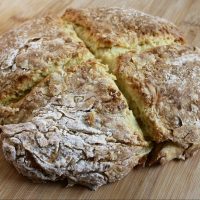Creating a homemade dry rub for grilling is one of the simplest and most effective ways to elevate the flavor of your meat, poultry, or vegetables. A dry rub is a blend of herbs, spices, and sometimes sugar or salt that is rubbed directly onto the surface of the food before cooking. Unlike marinades, which require time to penetrate, dry rubs work on the outer layer to form a flavorful crust and seal in moisture when exposed to high heat.
Homemade Dry Rub for Grilling
Creating a homemade dry rub for grilling is one of the simplest and most effective ways to elevate the flavor of your meat, poultry, or vegetables. A dry rub is a blend of herbs, spices, and sometimes sugar or salt that is rubbed directly onto the surface of the food before cooking. Unlike marinades, which require time to penetrate, dry rubs work on the outer layer to form a flavorful crust and seal in moisture when exposed to high heat.
Common base ingredients include paprika, brown sugar, garlic powder, onion powder, black pepper, cayenne, chili powder, and kosher salt. You can adjust the balance depending on the protein—use more brown sugar for pork, more chili powder and cumin for beef, or herbs like thyme and rosemary for poultry. The beauty of a homemade dry rub lies in its customizability, allowing you to control the flavor profile, heat level, and even dietary content (such as gluten-free, sugar-free, or low-sodium options).
Before grilling, pat the protein dry and generously apply the rub, pressing it into the surface to ensure adhesion. Let it sit for at least 15–30 minutes—or refrigerate for a few hours—to allow the flavors to infuse. When grilled, the sugars in the rub caramelize, forming a beautiful bark or crust, especially on meats like ribs, steaks, or chicken thighs.
A homemade dry rub is a must-have in any outdoor cook’s toolkit. It’s quick to mix, easy to store, and delivers consistently bold flavor.
Dry Rub VS Marinade
Understanding the difference between a dry rub and a marinade helps you choose the most suitable method for flavoring meat or vegetables, based on your time, texture, and taste goals. A dry rub is a mix of dry spices, herbs, and sometimes sugar or salt that is applied directly to the food’s surface. It creates a crust or “bark” when cooked, especially in high-heat or low-and-slow cooking applications, such as grilling or smoking.
A marinade, on the other hand, is a liquid solution made with acids (such as vinegar, citrus, or yogurt), oil, and seasonings. It’s used to tenderize and flavor meat by soaking it for several hours. Marinades penetrate the outer layers of the protein, adding moisture and depth to the flavor. However, too much acid or over-marinating can make meats mushy or have an uneven flavor.
Dry rubs are ideal for thicker cuts where a flavorful crust is desired—think ribs, brisket, or chicken wings. Marinades work best for lean or quick-cooking meats, such as chicken breasts, seafood, or thin steak cuts. Some cooks even combine the two: marinate first, then apply a dry rub before cooking.
Each method has strengths, and choosing between them often depends on the final texture and intensity you want. Dry rubs are faster and easier to use, while marinades require more planning and patience. Both deliver great results—but in different ways.
Best Dry Rub for Smoked Meats
When smoking meats, the best dry rub is one that enhances natural flavors while forming a flavorful bark during long, slow cooking. Smoking is a low-and-slow method that develops deep, smoky notes over hours. The dry rub plays a crucial role in building the outer crust and providing that first burst of flavor with every bite.
A balanced rub for smoked meats usually includes sweet, salty, and savory elements. Brown sugar is often used for its sweetness, as it caramelizes and helps develop a rich bark. Kosher salt is crucial for enhancing flavor penetration and maintaining moisture retention. Paprika (especially smoked paprika) adds color and depth, while garlic powder, onion powder, chili powder, mustard powder, and cumin bring complexity.
For beef cuts like brisket, a black pepper-heavy rub with minimal sugar is a traditional choice. Pork, on the other hand—especially ribs or shoulder—benefits from sweeter, more aromatic blends. Poultry pairs well with herb-forward rubs, such as those made with thyme, oregano, or rosemary.
The key is balance and consistency. Apply the rub liberally and evenly over dry meat, then let it sit for at least an hour (or overnight for maximum flavor infusion). During the smoke, the rub fuses with fat, juices, and smoke to create the coveted crust.
A great dry rub doesn’t overpower—it complements and enhances. It should work in harmony with the smoke to create layers of flavor that extend beyond surface seasoning.
Sweet and Spicy Rub for Chicken and Ribs
A sweet and spicy dry rub is the ultimate seasoning blend for meats like chicken wings, pork ribs, or even grilled vegetables. This flavor profile combines heat with a hint of sweetness to deliver a crave-worthy bite: first sweet, then a slow-building kick of spice.
This style of dry rub often includes brown sugar or turbinado sugar for added sweetness, along with paprika for its smoky flavor and color. Cayenne pepper or chipotle powder brings the heat, while garlic powder, onion powder, and black pepper balance the flavor. Some variations include the addition of mustard powder or cinnamon for unexpected depth.
This dry rub is ideal for barbecue settings where caramelization is a key consideration. When cooked over indirect heat or smoked, the sugar in the rub caramelizes beautifully, creating a sticky, flavorful crust. When seared or grilled, the heat activates the spices for an extra kick.
To apply, pat the meat dry, then rub the spice blend generously onto the surface. Let it sit for 30 minutes or more to allow the seasoning to absorb. Then cook low and slow—or with careful high heat—for optimal texture.
This rub can also be pre-packaged or made in bulk, offering a convenient go-to blend for last-minute grilling or roasting. It’s a crowd-pleaser for cookouts, tailgates, and family meals, especially when paired with a honey glaze or spicy dipping sauce for that perfect sweet-heat balance.
Dry rub
Ingredients
- 1 tbsp salt
- 1 tbsp pepper
- 2 tbsp paprika smoked or regular
- 1 tbsp Chili Powder
- 1 tbsp ground cumin
- 2 tbsp Brown Sugar
- 1 tbsp white sugar
Instructions
- Combine all ingredients
- use as a seasoning for your smoked pork recipes





